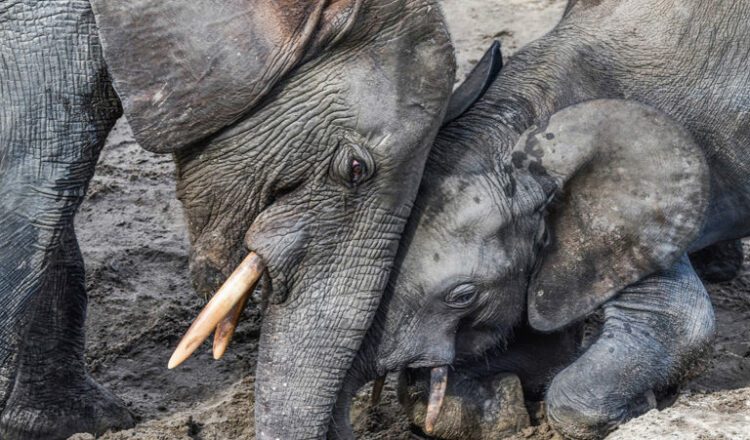On today’s episode of the Mongabay Newscast we take a look at a project that aims to preserve the rainforests of the Congo Basin in Central Africa and the biodiversity found in those forests by focusing on elephants and their calls.
The Elephant Listening Project is based out of Cornell University in the United States, but its field work is conducted in the Central African Republic and the Republic of Congo. As a research analyst with the project, Ana Verahrami has completed two field seasons in the Central African Republic, where she helped collect the behavioral and acoustic data vital to the project.
Verahrami joins the Mongabay Newscast to explain why forest elephants’ role as keystone species makes their survival crucial to the wellbeing of tropical forests and their other inhabitants. We listen to a handful of the recordings the Elephant Listening Project has made at Dzanga Bai in the Central African Republic to better understand elephant communication, as well as recordings from its landscape-scale acoustic grid in the Republic of Congo’s Nouabalé-Ndoki National Park.
It is believed that, in the early 20th century, there were as many as 3 to 5 million African elephants. Today, there are just around 400,000 African elephants left.
One of the two existing African elephant species, forest elephants are native to the humid forests of West Africa and the Congo Basin. The forest habitat they rely on has also suffered steep declines in recent years, with one 2018 study concluding that at current rates of deforestation, all of the primary forest in the Congo Basin could be cleared by the end of the century. As Mongabay’s contributing editor for Africa, Terna Gyuse, tells us, the chief threats to the Congo Basin’s rainforests are human activities.
Verahrami says that what the project is learning about elephant communication can help to improve protections for elephant populations: “That would give us a lot more detail on the population demography, the makeup of the group of elephants in that region, and also help us to better protect them. Is there a specific spot in the forest that they’re going to mate, for example? That’s somewhere we’d really, really, really want to make sure we’re protecting so the population can continue to grow.” Protecting elephant populations, Verahrami adds, will in turn benefit the tropical forest ecosystem as a whole.
Forest elephants at Dzanga bai in Central African Republic. Photo © Ana Verahrami, Elephant Listening Project
The Elephant Listening Project is part of the Cornell Lab of Ornithology. We’ve featured the work of several researchers affiliated with the lab in the past, here’s a few more examples:
• Audio: The sounds of tropical katydids and how they can benefit conservation, 01/22/20
• Audio: How listening to individual gibbons can benefit conservation, 11/26/19
• Audio: What underwater sounds can tell us about Indian Ocean humpback dolphins, 03/19/19
• Audio: The superb mimicry skills of an Australian songbird, 08/21/18
If you enjoy the Mongabay Newscast, we ask that you please consider becoming a monthly sponsor via our Patreon page, at patreon.com/mongabay. Just a dollar per month will really help us offset the production costs and hosting fees, so if you’re a fan of our audio reports from nature’s frontline, please support the Mongabay Newscast at patreon.com/mongabay.
You can subscribe to the Mongabay Newscast on Android, the Google Podcasts app, Apple Podcasts, Stitcher, TuneIn, RSS, Castbox, Pocket Casts, and via Pandora or Spotify. Or listen to all our episodes via the Mongabay website here on the podcast homepage.
Follow Mike Gaworecki on Twitter: @mikeg2001
FEEDBACK: Use this form to send a message to the author of this post. If you want to post a public comment, you can do that at the bottom of the page.
Notice: Transcripts are machine and human generated and lightly edited for accuracy. They may contain errors.
A transcript has not been created for this.
Source link : https://news.mongabay.com/podcast/audio-listening-to-elephants-to-protect-central-africas-tropical-forests/
Author :
Publish date : 2024-07-26 19:37:36
Copyright for syndicated content belongs to the linked Source.
